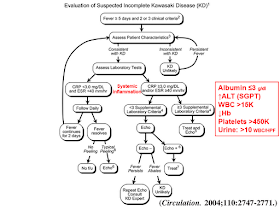From Pediatrics 2011;128:S213-S256
Causes of Secondary Hyperlipidemia
(i) Exogenous:
Alcohol
Drug therapy: Steroids, Isotretinoin, Beta-blockers, some OCPs, select chemotherapy agents, select anti-retroviral agents.
(ii) Endocrine/metabolic:
Hypothyroidism/Hypopituitarism
Type 1 and 2, DM
Pregnancy
Polycystic ovarian syndrome
Lipodystrophy
Acute intermittent porphyria
(iii) Renal:
Chronic renal disease
HUS
Nephrotic syndrome
(iv) Infectious:
Acute viral/bacterial infections
HIV
Hepatitis
(v) Hepatic:
Obstructive liver disease
Biliary cirrhosis
Alagile syndrome
(vi) Inflammatory diseases:
SLE
JRA
(vii) Storage diseases:
Glycogen Storage disease
Gaucher disease
Cystine-storage disease
Juvenile Tay-Sachs disease
Nieman-Pick disease
(viii) Other causes:
Kawasaki
Anorexia nervosa
Post-solid organ transplant
Childhood cancer survivors
Progeria
Idiopathic hypercalcemia
Klinefelter syndrome
Werner syndrome






















